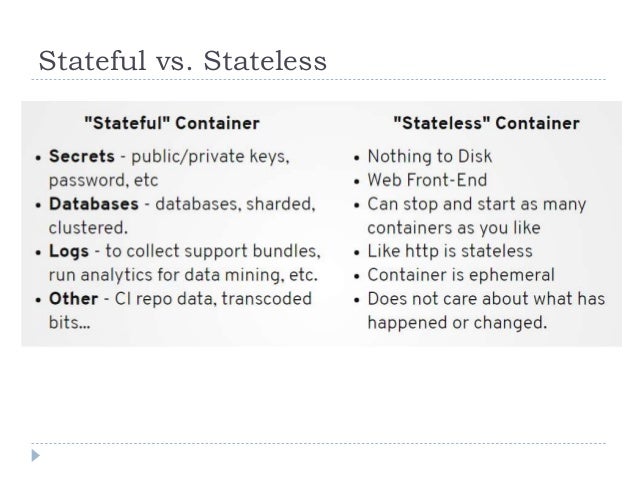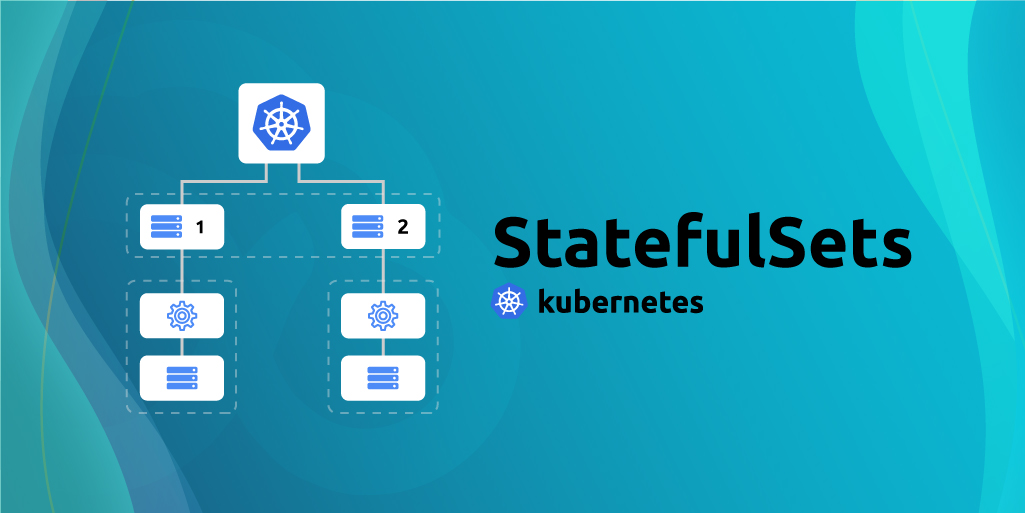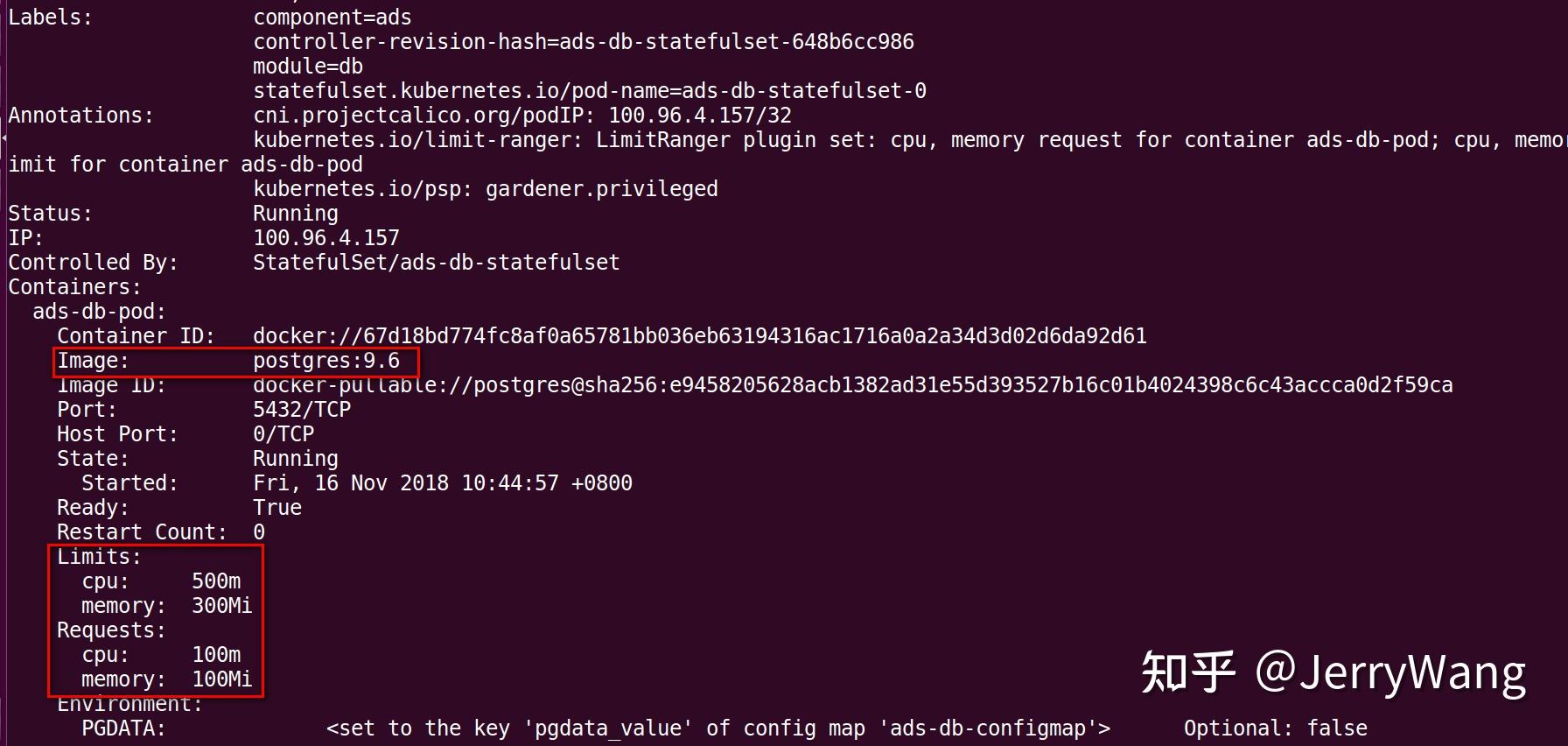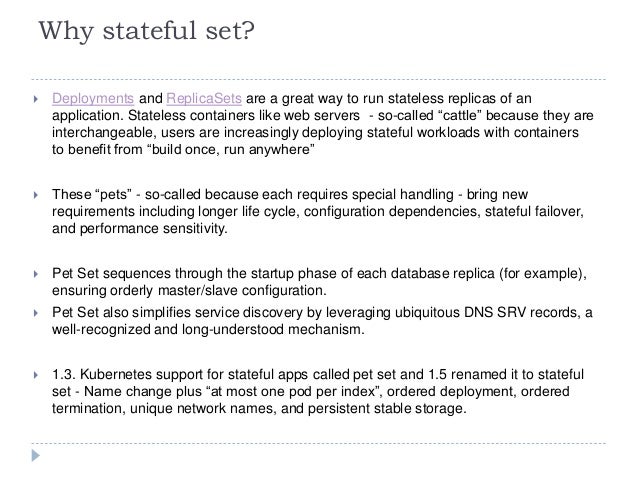What are Stateful Sets in Kubernetes?
Stateful Sets are a Kubernetes controller that manages the deployment and scaling of stateless and stateful applications. They provide a unique set of properties that distinguish them from other controllers like Deployments and DaemonSets. Stateful Sets ensure that each Pod (a running instance of a containerized task) is assigned a unique network identity, stable hostname, and persistent storage. These features make Stateful Sets ideal for applications requiring data consistency and high availability, such as databases, message queues, and cache systems.
Why Use Stateful Sets?
Stateful Sets offer several benefits that make them an attractive choice for managing stateful applications in Kubernetes. One significant advantage is their ability to provide stable network identities for each Pod. This stability ensures that services can reliably connect to the correct Pods, even as they scale or are replaced. Additionally, Stateful Sets offer persistent storage, ensuring that data remains consistent and available, even in the event of Pod failures or updates.
Another advantage of Stateful Sets is their ordered deployment and scaling behavior. When deploying a Stateful Set, Pods are created sequentially, allowing for the stable network identities and persistent storage to be properly configured. Similarly, when scaling down a Stateful Set, Pods are terminated in reverse order, ensuring that data is not lost and that services can continue to function.
These properties make Stateful Sets an ideal choice for applications requiring data consistency and high availability, such as distributed databases, message queues, and cache systems. By using Stateful Sets, developers can ensure that their applications are deployed and managed in a way that maximizes reliability and performance.
How to Deploy Stateful Sets in Kubernetes
To deploy a Stateful Set in a Kubernetes cluster, you’ll need to create a YAML configuration file that defines the desired Stateful Set. Here’s a step-by-step guide to help you get started:
-
Create a YAML file named
statefulset.yamlwith the following content:{ "apiVersion": "apps/v1", "kind": "StatefulSet", "metadata": { "name": "web-database" }, "spec": { "replicas": 3, "selector": { "matchLabels": { "app": "web-database" } }, "template": { "metadata": { "labels": { "app": "web-database" } } }, "serviceName": "web-database", "volumeClaimTemplates": [{ "metadata": { "name": "data-web-database" }, "spec": { "accessModes": ["ReadWriteOnce"], "resources": { "requests": { "storage": "1Gi" } } } }] } } -
This YAML file defines a Stateful Set named
web-databasewith three replicas, each with a unique network identity and persistent storage. ThevolumeClaimTemplatesfield specifies a persistent volume claim for each replica, ensuring that data is preserved even if a Pod is deleted or recreated. -
Apply the YAML file to your Kubernetes cluster using the following command:
kubectl apply -f statefulset.yaml -
Verify that the Stateful Set has been created and is running using the following command:
kubectl get statefulsets
Congratulations! You’ve successfully deployed a Stateful Set in your Kubernetes cluster.
Stateful Set Use Cases and Examples
Stateful Sets are an essential part of the Kubernetes ecosystem, providing a robust and flexible way to manage stateful applications. Here are some real-world examples and use cases of Stateful Sets:
Distributed Databases
Stateful Sets are ideal for managing distributed databases, such as MySQL, PostgreSQL, or MongoDB. By using Stateful Sets, you can ensure that each database node has a stable network identity and persistent storage, allowing for seamless data replication and failover. With the ordered deployment and scaling behavior of Stateful Sets, you can also ensure that database nodes are added or removed in a controlled and predictable manner.
Message Queues
Message queues, such as RabbitMQ or Apache Kafka, can also benefit from Stateful Sets. By assigning a unique network identity to each message queue node, you can ensure that clients can reliably connect to the correct node. Additionally, with persistent storage, you can ensure that messages are not lost, even in the event of node failures or updates.
Cache Systems
Cache systems, such as Redis or Memcached, can also be managed using Stateful Sets. By providing each cache node with a stable network identity and persistent storage, you can ensure that data is consistent and available, even as nodes are added or removed. With the ordered deployment and scaling behavior of Stateful Sets, you can also ensure that cache nodes are added or removed in a controlled and predictable manner.
Distributed Logging and Monitoring
Distributed logging and monitoring systems, such as Elasticsearch or Grafana, can also benefit from Stateful Sets. By assigning a unique network identity to each node, you can ensure that logs or metrics are consistently and reliably collected, even as nodes are added or removed. With persistent storage, you can also ensure that logs or metrics are not lost, even in the event of node failures or updates.
These are just a few examples of how Stateful Sets can be used in real-world scenarios. By providing stable network identities, persistent storage, and ordered deployment and scaling behavior, Stateful Sets offer a powerful and flexible way to manage stateful applications in Kubernetes.
Stateful Set Best Practices
Managing Stateful Sets in Kubernetes requires careful planning and attention to detail. Here are some best practices for managing Stateful Sets, including monitoring, scaling, and updating strategies.
Monitoring Stateful Sets
Monitoring Stateful Sets is crucial to ensure that they are running smoothly and without errors. Kubernetes provides built-in monitoring tools, such as kubectl and metrics-server, that can be used to monitor Stateful Sets. Additionally, third-party monitoring tools, such as Prometheus or Grafana, can be used to monitor Stateful Sets and provide more detailed metrics and visualizations.
Scaling Stateful Sets
Scaling Stateful Sets can be more complex than scaling stateless applications. When scaling a Stateful Set, it’s important to ensure that the new nodes are added in a controlled and predictable manner. Kubernetes provides an ordered scaling feature for Stateful Sets, which ensures that new nodes are added in the correct order and with the correct network identities and storage volumes.
Updating Stateful Sets
Updating Stateful Sets can also be more complex than updating stateless applications. When updating a Stateful Set, it’s important to ensure that the new version is compatible with the existing data and network identities. Kubernetes provides a rolling update feature for Stateful Sets, which ensures that the new version is deployed in a controlled and predictable manner, without disrupting the existing Stateful Set.
Backup and Disaster Recovery
Backup and disaster recovery are essential for managing Stateful Sets. By regularly backing up the data stored in Stateful Sets, you can ensure that you can recover from any failures or disasters. Kubernetes provides several tools for backup and disaster recovery, such as kubectl and velero, which can be used to backup and restore Stateful Sets.
Security Best Practices
Security is an essential consideration when managing Stateful Sets. Here are some security best practices for Stateful Sets:
-
Use secure network protocols, such as HTTPS or SSH, to ensure that data is transmitted securely.
-
Use role-based access control (RBAC) to restrict access to Stateful Sets and their associated resources.
-
Regularly update and patch Stateful Sets to ensure that they are protected against known vulnerabilities.
-
Use secrets and config maps to securely store and manage sensitive data, such as passwords or API keys.
By following these best practices, you can ensure that your Stateful Sets are running smoothly and securely in your Kubernetes cluster.
Stateful Set vs. Deployments and DaemonSets
Stateful Sets, Deployments, and DaemonSets are all Kubernetes controllers that manage the lifecycle of Pods in a cluster. However, each controller has its unique properties and ideal use cases. Here’s a comparison of Stateful Sets with Deployments and DaemonSets:
Stateful Sets vs. Deployments
Deployments are designed for managing stateless applications, where each Pod is identical and can be replaced or scaled without affecting the overall application. In contrast, Stateful Sets are designed for managing stateful applications, where each Pod has a unique identity and requires persistent storage and ordered deployment/scaling.
Here are some key differences between Stateful Sets and Deployments:
-
Stateful Sets provide stable network identities, while Deployments do not.
-
Stateful Sets provide persistent storage, while Deployments do not.
-
Stateful Sets deploy and scale Pods in a controlled and predictable order, while Deployments do not.
-
Stateful Sets are more complex to manage than Deployments, due to their unique properties and requirements.
Stateful Sets vs. DaemonSets
DaemonSets are designed for managing Pods that provide a specific functionality or service on each node in a cluster. For example, a DaemonSet might be used to manage logging or monitoring agents on each node. In contrast, Stateful Sets are designed for managing stateful applications, where each Pod has a unique identity and requires persistent storage and ordered deployment/scaling.
Here are some key differences between Stateful Sets and DaemonSets:
-
Stateful Sets provide stable network identities, while DaemonSets do not.
-
Stateful Sets provide persistent storage, while DaemonSets do not.
-
Stateful Sets deploy and scale Pods in a controlled and predictable order, while DaemonSets do not.
-
DaemonSets are more straightforward to manage than Stateful Sets, due to their simpler design and requirements.
In summary, Stateful Sets, Deployments, and DaemonSets all have their unique properties and ideal use cases. When choosing a Kubernetes controller for managing Pods, it’s important to consider the specific requirements and constraints of the application, and choose the controller that best fits those needs.
Troubleshooting Stateful Set Issues
Stateful Sets are a powerful tool for managing stateful applications in Kubernetes, but they can also be complex and prone to issues. Here are some common Stateful Set issues and guidance on how to diagnose and resolve them:
Pod Disruptions
Pod disruptions can occur due to various reasons, such as node failures, resource exhaustion, or updates. When a Pod in a Stateful Set is disrupted, Kubernetes attempts to recreate it on the same or a different node. However, this process can be slow and may cause application downtime or data loss.
To diagnose Pod disruptions, you can use the kubectl describe pod command to view the Pod’s status and events. You can also use Kubernetes monitoring tools, such as Prometheus or Grafana, to monitor Pod metrics and detect anomalies.
To resolve Pod disruptions, you can try the following strategies:
-
Increase the number of replicas in the Stateful Set to ensure that there are enough Pods to handle traffic and provide redundancy.
-
Configure resource requests and limits for Pods to prevent resource exhaustion and ensure that Pods have enough resources to run smoothly.
-
Use rolling updates to update Stateful Sets without disrupting the application or losing data. Rolling updates ensure that only one Pod is updated at a time, allowing the other Pods to continue handling traffic and providing redundancy.
Storage Problems
Stateful Sets require persistent storage to ensure that data is preserved across Pod restarts and updates. However, managing storage in Stateful Sets can be complex and prone to issues, such as volume provisioning errors, storage capacity exhaustion, or data corruption.
To diagnose storage problems, you can use the kubectl describe pvc and kubectl describe pv commands to view the status and events of Persistent Volume Claims (PVCs) and Persistent Volumes (PVs). You can also use Kubernetes monitoring tools to monitor storage metrics and detect anomalies.
To resolve storage problems, you can try the following strategies:
-
Configure storage classes to automate volume provisioning and ensure that there are enough storage resources to handle traffic and provide redundancy.
-
Monitor storage capacity and usage to prevent storage capacity exhaustion and ensure that there are enough storage resources to handle traffic and provide redundancy.
-
Use backup and disaster recovery tools, such as Velero or Longhorn, to backup and restore Stateful Sets and their associated storage volumes.
By following these best practices and strategies, you can ensure that your Stateful Sets are running smoothly and without issues. However, if you encounter any issues that you cannot resolve, you can seek help from the Kubernetes community or consult Kubernetes documentation for further guidance.
The Future of Stateful Sets
Stateful Sets have become an essential part of the Kubernetes ecosystem, providing a powerful tool for managing stateful applications in a cloud-native environment. As Kubernetes continues to evolve and improve, so too will Stateful Sets, with new features and advancements on the horizon.
Improved Scaling and Resiliency
One area of focus for future Stateful Set improvements is scaling and resiliency. As stateful applications become more complex and mission-critical, the need for robust and scalable Stateful Sets becomes even more important. Kubernetes developers are working on new features and enhancements to improve Stateful Set scaling and resiliency, such as automated scaling, self-healing, and improved fault tolerance.
Advanced Storage Management
Another area of focus for future Stateful Set improvements is storage management. Stateful Sets require persistent storage to ensure that data is preserved across Pod restarts and updates. However, managing storage in Stateful Sets can be complex and prone to issues, such as volume provisioning errors, storage capacity exhaustion, or data corruption.
To address these challenges, Kubernetes developers are working on new features and enhancements to improve Stateful Set storage management, such as dynamic volume provisioning, improved storage orchestration, and advanced backup and disaster recovery capabilities.
Integration with Emerging Technologies
Finally, Kubernetes developers are working on integrating Stateful Sets with emerging technologies, such as serverless computing, edge computing, and machine learning. By integrating Stateful Sets with these technologies, Kubernetes can provide a more comprehensive and flexible platform for managing stateful applications in a variety of use cases and environments.
In conclusion, the future of Stateful Sets is bright, with new features and advancements on the horizon. By improving scaling and resiliency, advancing storage management, and integrating with emerging technologies, Kubernetes developers are ensuring that Stateful Sets remain a powerful and essential tool for managing stateful applications in a cloud-native environment.







